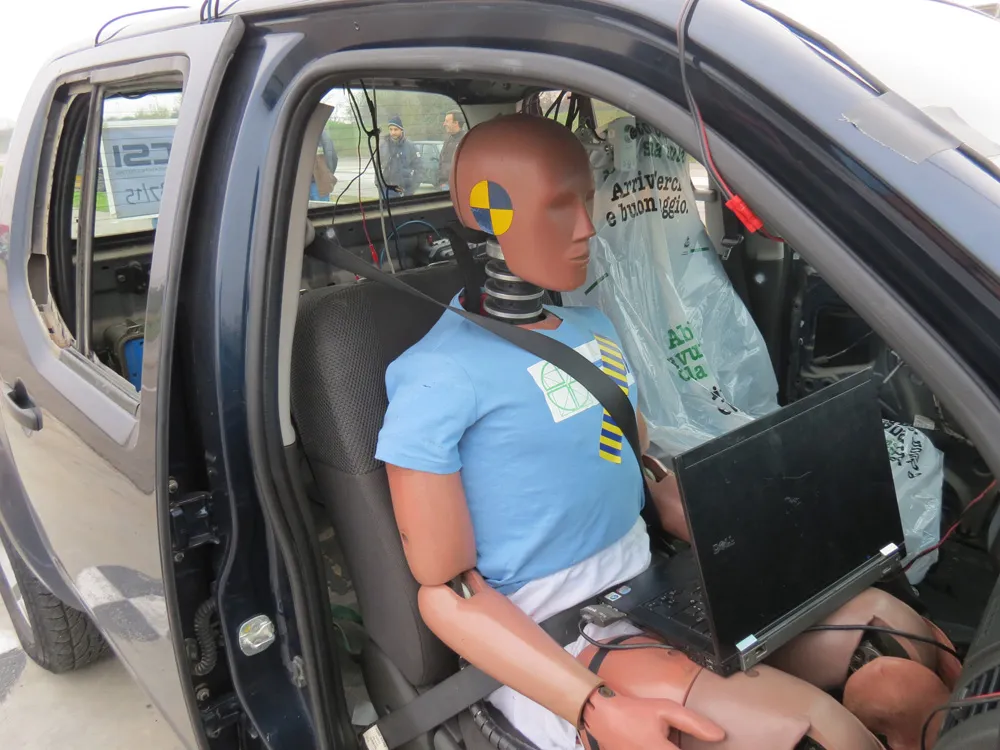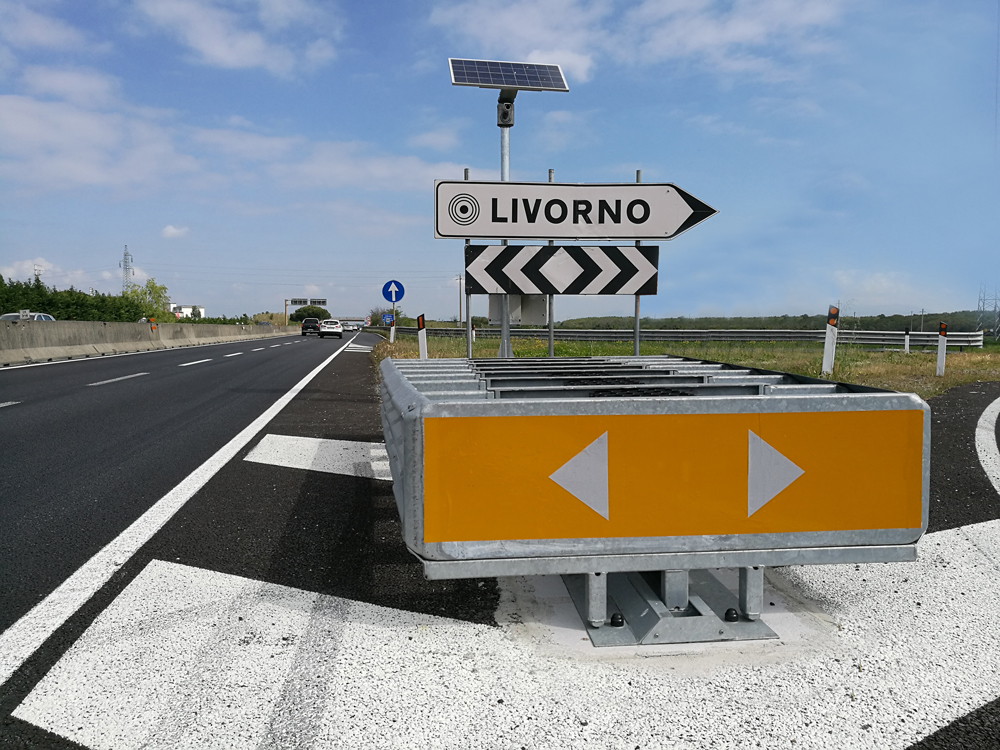
This is especially the case for frontal barriers, such as crash cushions and end terminals. The so-called capacitive test for crash cushions performed by using the heaviest vehicles is a frontal test at 110kph using a 1,500kg vehicle. The impact of this one-and-a-half-tonne vehicle with the obstacle generates around 701kJ of kinetic energy.
But in reality, there is a big difference between the vehicles used for EN 1317 certification tests and those circulating on European roads. There are more and more sports utility vehicles – SUVs – that weigh more than 2,000kg on European roads.
According to the American NCHRP 350 and its latest version, called MASH (Manual for Assessing Safety Hardware), the performance of crash cushions and end terminals must be evaluated using a more-than 2,000kg pick-up truck. Also, attention is paid to the load balance during impact which could lead to rollover of the impacting vehicle.
While European Union countries are using EN 1317, many countries are dropping EN 1317 in favour for US standards because the American testing mirrors what is driving down the roads. European barrier products are, therefore, losing out in the global marketplace to US products
It is acknowledged that NCHRP/MASH products are considered non-compliant in Europe and only CE-marked products can be installed within the EU. However, to date the CEN (European Committee for Standardisation), an association that brings together national standardisation agencies of 34 European countries, is not facing up to the problem of obsolete vehicles being used as test vehicles in Europe.
Another worrying aspect is that impact tests on crash cushions lead to the homologation (certification) of the device for use at four vehicle speeds: 50kph, 80kph, 100kph and an upper limit of 110kph. However, the maximum speed limit on vast majority of European major highways and motorways is often, in fact, 130kph.
It’s also important to highlight that EN 1317, while certifying crash worthiness, does not prescribe norms for the installation of the barrier along a road. Installation regulations are left to national governing bodies. If there were pan-European regulations focussing on installation, these might provide additional guarantees of safety and performance reliability of barriers.
We would suggest that safety for passengers is assured by devices which are compliant with the PRR rule - Performance, Robustness and Repetitiveness.
The more robust the device, the more effective its response to impacts, according to dynamics not now contemplated in impact tests. For example, this would be an impact at 130kph or with an impact angle greater than 20°.
Regarding repetitiveness, crash tests are carried out under carefully considered conditions that will show optimal performance of the system. However, once installed along a road, there may be many, many more conditions under which the barrier must perform - and it must do so repeatedly.
Furthermore, EN 1317 does not require the assessment of injuries to vehicle occupants, despite the fact the such devices aim to save lives. In fact, both European and American standards for evaluating vehicle restraint systems don’t require to crash-test the system with an onboard instrumented dummy, despite such sophisticated devices existing.

For example, there is dummy that is used by EuroNCAP (European New Car Assessment Programme) for rating the passenger safety of the vehicles in case of frontal accidents. It analyses head, spine and chest injuries. Yet this tool is not required for the evaluation of compliance with EN 1317, NCHRP 350 or MASH 2016. This assessment void could be filled easily by using a EuroNCAP dummy.
It should furthermore be noted that the American norms of NCHRP and MASH don’t consider the assessment of injuries to vehicle occupants. When is it possible to be sure that a device complies with the PRR rule? When vehicle occupants live to tell the tale. Those declarations are more worthy than any certification of compliance.
A very useful instrument to analyse the behaviour of crash cushions installed on a road is an impact-monitoring system that includes some ability to video the crash. SMA Road Safety already has such a system, called Geronimo. It is supplied together with the crash cushion and is triggered by way of a barrier-mounted sensor.
Importantly, Geronimo records not just the behaviour of the barrier, but the dynamics of the accident, from the instant of impact. Moreover, Geronimo alerts emergency services in real time about a crash – extremely important when not just minutes but seconds can save lives.
Such impact-monitoring systems as Geronimo – a 100% made-in-Italy solution - can ensure the safety of vehicle passengers at a time when the EN 1317 European Standard seems to be obsolete and ineffective.
*SMA Road Safety is a global Italian safety barrier manufacturer, based in Marcianise. Apart from making the Geronimo system, SMA manufactures the Leonidas crash cushion, which is compliant with both the European EN 1317 and US NCHRP 350 standards.








